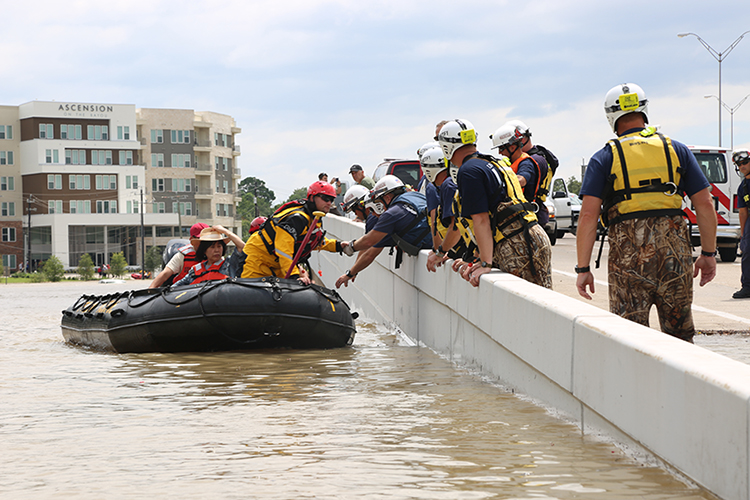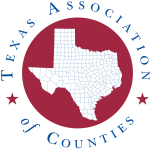County Magazine | May 06, 2025
'It only takes one'
Texas counties prepare for hurricane season

Texas coastal counties are in a constant state of preparation. When one hurricane season comes to an end in November, they brace for the next that begins the following June. If they are lucky, these planning months aren’t coupled with recovery — picking up the pieces while bracing for another storm to knock them down.
During the past 125 years, Texas has experienced more hurricanes than any other state in the U.S. other than Florida, according to the National Oceanic and Atmospheric Administration. Soon, the National Weather Service will release its forecast for this year’s season that looks at conditions such as sea surface temperatures and atmospheric pressure patterns. But Harris County Homeland Security and Emergency Management Coordinator Mark Sloan said he has learned not to put too much stock in predictions.
“It only takes one storm to say it wasn’t a very good year,” he said.
Sloan has been with Harris County for 23 years. He was part of the command staff during Hurricane Katrina in 2005, then Harvey, Ike and Beryl.
“As an emergency manager, my job is to be paranoid,” he said. “I have to think through all the potential worst-case scenarios and put a plan together. My job is not to frighten the public but to be aware that these kinds of things can occur.”
Although it is the response to storms that gets the most airtime on television, the more important work happens in preparation and mitigation, Sloan said. It can mean the difference between life and death when disaster comes. This means everything from deepening bayous and creeks to putting special film on windows so when debris hits, they don’t break. It also includes engaging with private sector partners such as grocery stores to make sure they are able to bring in critical supplies, and telecommunications companies to ensure cellphone service can be restored.
Whether it’s a Category 1 or a Category 5 storm, the danger remains the same, Sloan said. Sometimes, a hurricane brings heavy rain and flooding, like in Harvey in 2017. Other times, it’s a wind event like Beryl in 2024 that takes out trees and power lines.
“No two storms act the same,” he said. “People have to understand that when a tropical storm is named in the Gulf, we have to be aware of its threat to the community, power and infrastructure, and plan and prepare accordingly.”
People underestimate storms, Sloan said, whether they’ve weathered many Texas hurricanes, or they are new to the area — which many people in Harris County are — and have no idea how to prepare.
There’s a slogan Southeast Texas counties use: Make a plan. Build a kit. Stay informed.
Galveston County Emergency Management Coordinator Brad Burness’ advice: Sign up for local weather alerts from your city, county or region. Outline an escape route in case of an evacuation. Know where you will stay. Have extra medications stored. Make sure your gas tanks are above half full. Keep three to seven days of water on hand. Store your important documents in one place — insurance cards, deed and title for your house and car, medical and vet records.
“When you have to throw the kids and dogs in the car, and it’s time to go, those things are crucial,” he said.
A 26-year Coast Guard veteran, Burness said coordinating with surrounding counties is critical in a storm, especially when it comes to evacuations. “If folks in Houston order an evacuation before us, that will clog up the highways and make it impossible for my folks to get out,” he said. “When you have to force people out of homes, even if you know you are doing it for the right reasons, it’s a lot of pressure honestly.”
It’s been eight years since Galveston County was hit with a major hurricane, a fact that is daunting for Burness.
“The longer we go without a storm, the sooner we are to the next one,” he said.
As counties brace for the worst, they continually look to make improvements. Galveston County updates its emergency operations plan every year. It is expanding its public education efforts, holding town halls to teach disaster preparedness, and working to ensure all vulnerable populations — people who have a medical disability or don’t have transportation — are signed up on STEAR, the State of Texas Emergency Assistance Registry. When a storm comes, it is the county’s job to reach these populations and ensure their safe evacuation. STEAR helps track that information.
Although social media is an effective tool, many older people don’t use these platforms, and social media can involve rampant misinformation. Harris County is seeking creative ways to educate people, including sending messaging in water bills. Artificial intelligence is also helping translate disaster information into multiple languages to reach more people.
These types of efforts can benefit communities across the state to help in all types of disasters, from fires to winter storms. “Our capabilities throughout the state of Texas have continued to improve, but we are not done,” Sloan said. “We have to continue to expand the field of emergency management across this state to not only be capable of responding and preparing but also recovering.”

